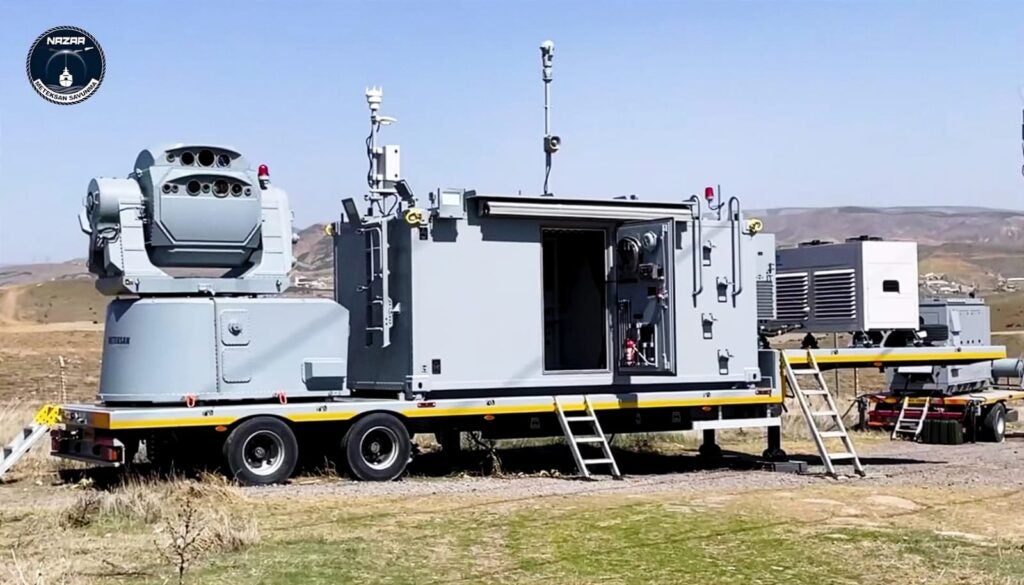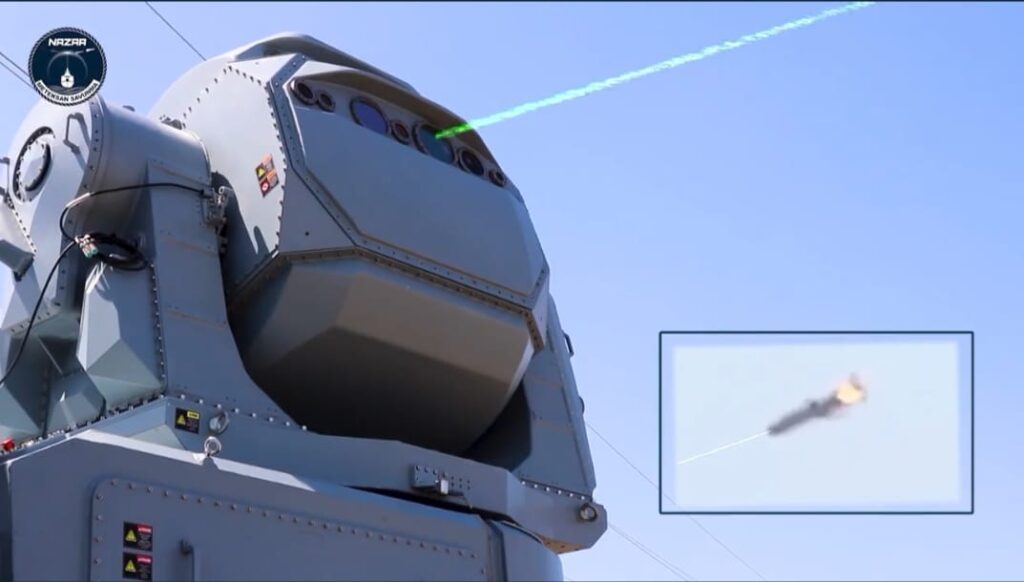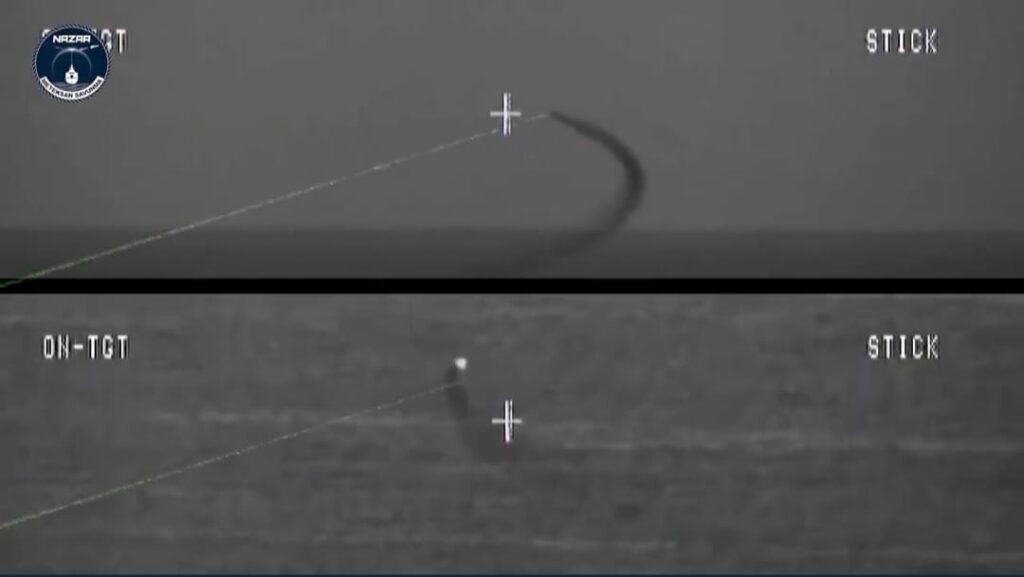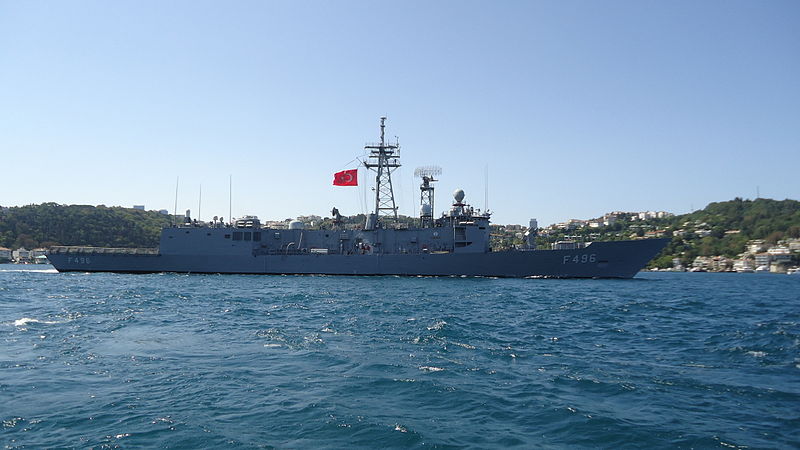Meteksan’s NAZAR Laser Electronic Attack System Enters Service With The Turkish Naval Forces
The Turkish Naval Forces Command recently published a document summarizing significant milestones in the Turkish Navy’s history. The document highlighted some interesting recent achievements. According to the document, the Laser Electronic Attack System known as “GABYA-LETS” developed by Meteksan Defense as part of the NAZAR Project was integrated into the TCG GÖKOVA (F-496) Frigate on March 22, 2021, and entered the Turkish Navy’s inventory. This is the first official acknowledgment of the rumors that had been reported in the Turkish press for some time.
The Nazar Project, which began in 2016 with a contract signed between the Turkish Defense Industry Agency and Meteksan Defense, aimed to develop a laser system that can provide protection against third and fourth generation missile threats with Infrared (IR) and Imaging Infrared (IIR) seekers for military bases and important platforms of the Naval Forces. The NAZAR Project currently has two versions: ground and naval. The design phase of the NAZAR Ground System, developed within the scope of the NAZAR Project’s First Phase, was successfully completed in July 2019, and the system was showcased for the first time at the IDEF 2021 Fair. It is estimated that the tests of the NAZAR-Ground Laser Electronic Attack System were completed in 2021 and it was put into service in the last quarter of 2022 to provide protection to a strategic facility belonging to the Turkish Naval Forces command.

In 2021 Özgür Cankara, Deputy General Manager of Meteksan Defense, explained how the Nazar system works:
“Let’s imagine a missile system. This missile is coming towards our platform as a threat. Nazar first utilizes a laser with the correct wavelength to illuminate this missile. When the missile is illuminated, a reflection known as a ‘cat’s eye glow’ appears on the seeker head. Although we cannot see it with our naked eyes, the Nazar System’s cameras notice the glare and begin to follow it. It directs a focused laser beam in the correct modulation towards the seeker coil while following. At this point, the seeker goes blind, unable to see its target, and the missile is redirected away from the target and towards a completely different location. So the target we’re at is no longer a threat to the platform.”

Following the completion of production of the ground version, the company began work on the naval version for use in Turkey’s future TF-2000 Air Defense Warfare Destroyers. It is estimated that this system is still under development as it will be put into use with Turkey’s future TF-2000 Air Defense Warfare Destroyers. Considering the size of the naval version of the NAZAR System, the system could also be deployed on the TCG Anadolu amphibious assault ship. The naval version of NAZAR is a far more sophisticated system than the current GABYA-LETS. According to Defense Turkey, while both are considered Laser Electronic Attack Systems, NAZAR is more effective at multiple wavelengths and has a longer range of effectiveness than GABYA-LETS, which can only be used up to a certain distance against guided missiles with EO seekers operating in a single wavelength.

Meteksan Defense is also planning to downsize the NAZAR system so that it can be used on smaller platforms. The NAZAR Lite system, which is expected to debut in 2023 or 2024, is expected to be integrated into Turkey’s unmanned surface vehicles, particularly the Meteksan ULAQ. In comparison to the current NAZAR systems, the new product that will be unveiled in this context will operate on a smaller optical window. As a result, the NAZAR Lite system’s energy requirements, weight, and dimensions will also be reduced.
NAZAR, considered as a strategically important project for Turkey, is designed to be effective against known EO/IR guided missiles, as well as to have reconnaissance and surveillance capabilities that provide an advantage against asymmetric threats due to its broadband capability. The system requires less than 10kW of power and has its own generator for testing and operation on land. At sea, the system will run on the ship’s own power supply.

